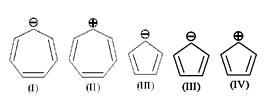Which of the following plant species you would select for the production of bioethanol ?
Zea mays
Pongamia
Jatropha
Brassica
The correct Answer is:C
To determine which plant species is best suited for the production of bioethanol from the given options (A. Z. Mace, B. Pongamia, C. Zatropa, D. Brassica), we can follow these steps:
1. Understanding Bioethanol Production:
- Bioethanol is primarily produced from plant materials that are rich in carbohydrates, particularly glucose. The higher the glucose content, the more suitable the plant is for bioethanol production.
2. Evaluating Each Option:
- A. Z. Mace (Maize): Maize is a common crop used for bioethanol production due to its high starch content, which can be converted into glucose. However, it is also a staple food crop, which raises concerns about food security when used for fuel.
- B. Pongamia: Pongamia is known for its oil-rich seeds, which can be converted into biodiesel rather than bioethanol. It is not primarily used for bioethanol production.
- C. Zatropa: Zatropa is recognized for its seeds that are rich in fatty acids. These seeds can be processed to produce biofuels, including bioethanol. It is a non-food crop, making it a more sustainable choice for bioethanol production without affecting food supplies.
- D. Brassica: Some species of Brassica can produce bioethanol, but they are not as widely used or efficient as other options. They are often used for other purposes, and their bioethanol properties are not as prominent.
3. Conclusion:
- After evaluating the options, Zatropa stands out as the most suitable plant species for bioethanol production. It does not compete with food crops and has the necessary properties for efficient biofuel production.
Final Answer:
C. Zatropa is the best choice for the production of bioethanol.
---
- Bioethanol is primarily produced from plant materials that are rich in carbohydrates, particularly glucose. The higher the glucose content, the more suitable the plant is for bioethanol production.
- A. Z. Mace (Maize): Maize is a common crop used for bioethanol production due to its high starch content, which can be converted into glucose. However, it is also a staple food crop, which raises concerns about food security when used for fuel.
- B. Pongamia: Pongamia is known for its oil-rich seeds, which can be converted into biodiesel rather than bioethanol. It is not primarily used for bioethanol production.
- C. Zatropa: Zatropa is recognized for its seeds that are rich in fatty acids. These seeds can be processed to produce biofuels, including bioethanol. It is a non-food crop, making it a more sustainable choice for bioethanol production without affecting food supplies.
- D. Brassica: Some species of Brassica can produce bioethanol, but they are not as widely used or efficient as other options. They are often used for other purposes, and their bioethanol properties are not as prominent.
- After evaluating the options, Zatropa stands out as the most suitable plant species for bioethanol production. It does not compete with food crops and has the necessary properties for efficient biofuel production.
C. Zatropa is the best choice for the production of bioethanol.
Similar Questions
Knowledge Check
Which of the following plant species would you select for the production of bioethanol?
ABrassicaBZea maysCPangarriaDJatrophaWhich of the following carbonates would you expect to rearrange?
A B
B C
C D
D
Which one of the following acids would you expect to be the strongest?
AI−CH2COOHBCl−CH2COOHCBr−CH2COOHDF−CH2COOH
Which one of the following species of bees is used for the commercial production of honey?
View SolutionWhich of the following is correct for r-selected species ?
View SolutionWhich of the following pairs of species would you expect to have largest difference in spin only magnetic moment ?
View SolutionWhich of the following species would be expected to exhibit aromatic character?

View SolutionWhich of the following reactions would produce same product?
View Solution
